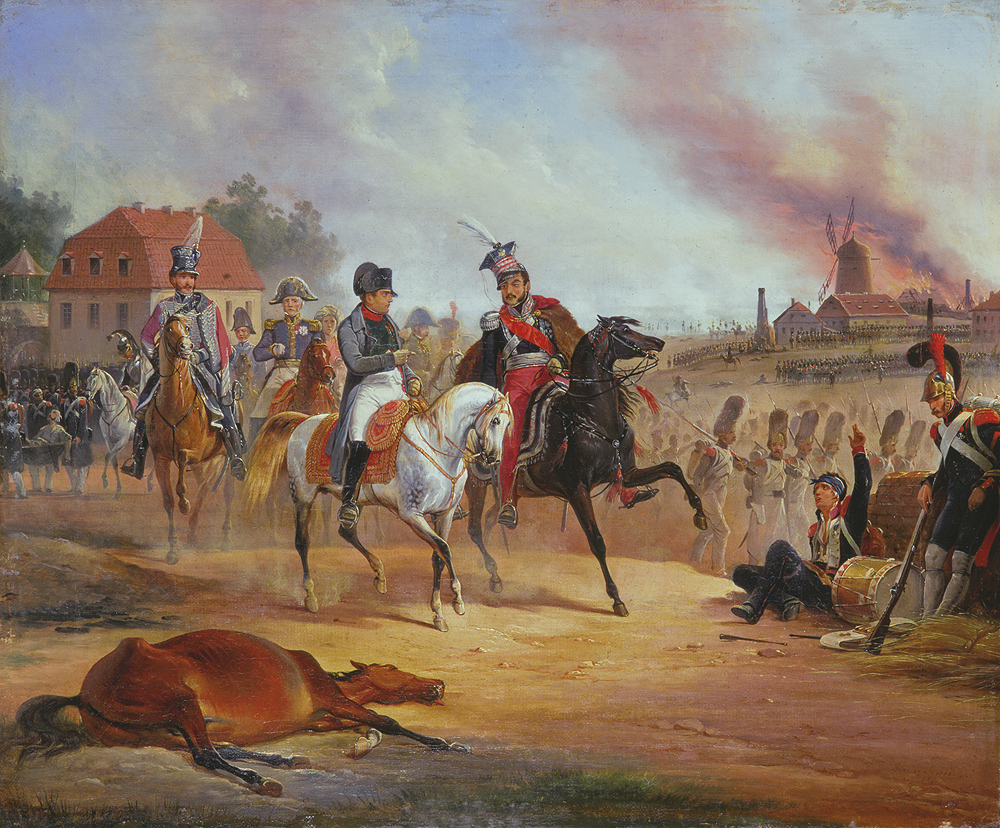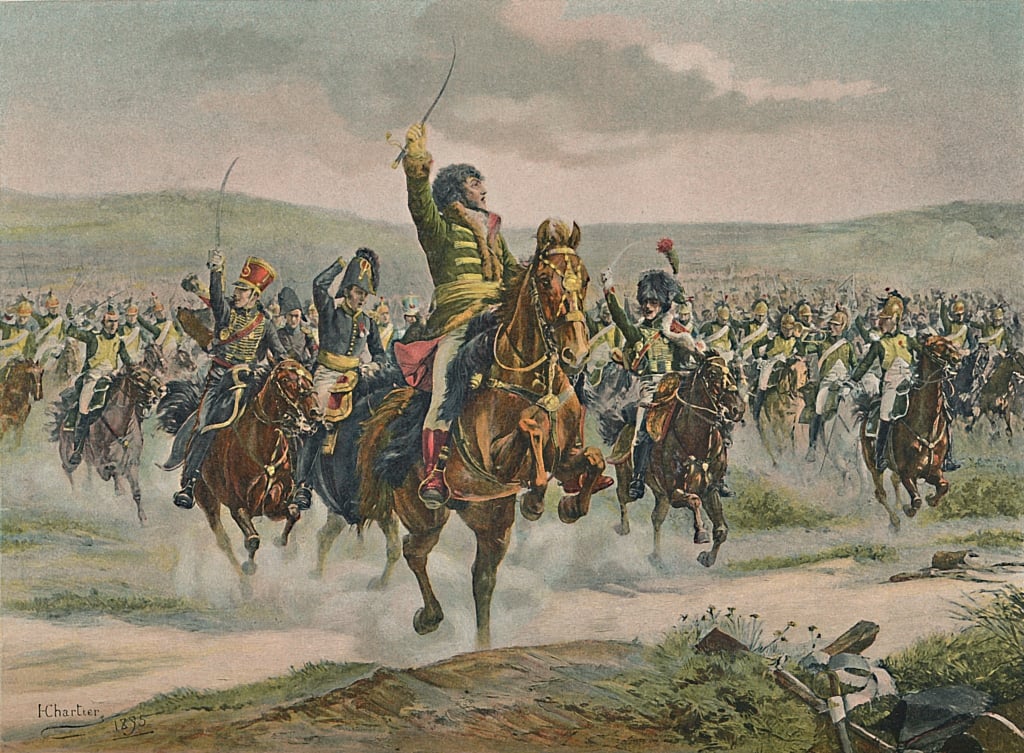|
Liebertwolkwitz
Liebertwolkwitz is an outlying settlement and ''Ortsteil'' of Leipzig on the city's south side. It contains the , the highest elevation in the Leipzig area. It was established in or before 1040. Before the local government boundary reform in 1999, it was an administratively independent municipality. History Origins The first surviving record of the place, then identified as "Niwolkesthorp", dates from 1040. It is likely to have originated in the 7th or 8th century, however, as a Slavic settlement. Church Fire destroyed the Romanesque church in 1575. It was replaced with a rectangular structure which featured a stout tower at its west end. In 1702 this tower was rebuilt in the Baroque style, which left it taller and more ornate. The Battle of the Nations Monarchenhügel (''Monarchs' Hill), part of the higher ground within the territory of Liebertwolkwitz, is of particular historical significance. It was from here, in October 1813 as fighting reached its climax, that t ... [...More Info...] [...Related Items...] OR: [Wikipedia] [Google] [Baidu] |
Battle Of Leipzig
The Battle of Leipzig (french: Bataille de Leipsick; german: Völkerschlacht bei Leipzig, ); sv, Slaget vid Leipzig), also known as the Battle of the Nations (french: Bataille des Nations; russian: Битва народов, translit=Bitva narodov), was fought from 16 to 19 October 1813 at Leipzig, Saxony. The Coalition armies of Austria, Prussia, Sweden, and Russia, led by Tsar Alexander I and Karl von Schwarzenberg, decisively defeated the '' Grande Armée'' of French Emperor Napoleon Bonaparte. Napoleon's army also contained Polish and Italian troops, as well as Germans from the Confederation of the Rhine (mainly Saxony and Württemberg). The battle was the culmination of the German Campaign of 1813 and involved 560,000 soldiers, 2,200 artillery pieces, the expenditure of 400,000 rounds of artillery ammunition, and 133,000 casualties, making it the largest battle in Europe prior to World War I. Decisively defeated again, Napoleon was compelled to return to France while ... [...More Info...] [...Related Items...] OR: [Wikipedia] [Google] [Baidu] |
Zacharias Hildebrandt
Zacharias Hildebrandt (1688, Münsterberg, Silesia – 11 October 1757, Dresden, Saxony) was a German organ builder. In 1714 his father Heinrich Hildebrandt, a cartwright master, apprenticed him to the famous organbuilder Gottfried Silbermann, brother of Andreas Silbermann in Freiberg. In 1721 Hildebrandt finished his masterpiece, the organ of the Nikolaikirche of Langhennersdorf, a small village near Freiberg. Afterwards he built an organ in Störmthal near Leipzig (where befriended Johann Sebastian Bach) and from 1724 to 1726 an organ in Lengefeld. On this project, a dispute developed with Gottfried Silbermann, who treated him as a rival and sued him. The dispute was settled by an agreement in which Hildebrandt obliged himself to take over only orders rejected by Silbermann. Therefore, he moved his work to the region near Leipzig and to Thuringia. J.S. Bach thought Hildebrandt was the best organ builder of his time. Hildebrandt's largest organ has 3 manuals and a pedalboa ... [...More Info...] [...Related Items...] OR: [Wikipedia] [Google] [Baidu] |
Leipzig
Leipzig ( , ; Upper Saxon: ) is the most populous city in the German state of Saxony. Leipzig's population of 605,407 inhabitants (1.1 million in the larger urban zone) as of 2021 places the city as Germany's eighth most populous, as well as the second most populous city in the area of the former East Germany after (East) Berlin. Together with Halle (Saale), the city forms the polycentric Leipzig-Halle Conurbation. Between the two cities (in Schkeuditz) lies Leipzig/Halle Airport. Leipzig is located about southwest of Berlin, in the southernmost part of the North German Plain (known as Leipzig Bay), at the confluence of the White Elster River (progression: ) and two of its tributaries: the Pleiße and the Parthe. The name of the city and those of many of its boroughs are of Slavic origin. Leipzig has been a trade city since at least the time of the Holy Roman Empire. The city sits at the intersection of the Via Regia and the Via Imperii, two important medieval trad ... [...More Info...] [...Related Items...] OR: [Wikipedia] [Google] [Baidu] |
René Adler
René Adler (born 15 January 1985) is a retired German footballer who played as a goalkeeper. Early life Adler is the son of former East German international Jens Adler. His cousin is Israeli-American professional lacrosse player Max Adler. Club career VfB Leipzig Adler started at age six playing for VfB Leipzig's youth side. After nine years for Leipzig, Adler joined the youth system of Bayer 04 Leverkusen in 2000. Bayer 04 Leverkusen After serving the youth system, Adler joined the B team in 2002. He made eight appearances for the B team in the 2002–03 season. At the beginning of the 2003–04 season he became part of the club's first team, which played in the Bundesliga. Nevertheless, he didn't make an appearance and continued to play for the second team. He also failed to make any first team appearances during the 2004–05 and 2005–06 seasons. However, in the 2005–06 Regionalliga season, he made 19 appearances for the B team. In May 2006 he sustained a rib craze ... [...More Info...] [...Related Items...] OR: [Wikipedia] [Google] [Baidu] |
Vendée
Vendée (; br, Vande) is a department in the Pays de la Loire region in Western France, on the Atlantic coast. In 2019, it had a population of 685,442.Populations légales 2019: 85 Vendée INSEE Its prefecture is . History The area today called the Vendée was originally known as the ''Bas-Poitou'' and is part of the former province of . In the southeast corner, the village of |
Les Epesses
Les Epesses () is a commune in the Vendée department in the Pays de la Loire region in western France. It is best known for the Puy du Fou historical theme park. Geography The municipal territory of Les Epesses covers 3,156 hectares. The average altitude of the commune is 182 meters, with levels fluctuating between 118 and 254 meters.« Les Epesses », ''Répertoire géographique des communes'', fichier de l'Institut national de l'information géographique et forestière (IGN) sur les communes de la Métropole, 2015. See also *Communes of the Vendée department * Puy du Fou Puy du Fou () is a historical theme park in Les Epesses in the Pays de la Loire region of western France. It receives more than 2 million visitors every year, making it one of the most popular theme parks in France. In 2019 and 2020, it is the f ... References Communes of Vendée {{Vendée-geo-stub ... [...More Info...] [...Related Items...] OR: [Wikipedia] [Google] [Baidu] |
Twin Towns And Sister Cities
A sister city or a twin town relationship is a form of legal or social agreement between two geographically and politically distinct localities for the purpose of promoting cultural and commercial ties. While there are early examples of international links between municipalities akin to what are known as sister cities or twin towns today dating back to the 9th century, the modern concept was first established and adopted worldwide during World War II. Origins of the modern concept The modern concept of town twinning has its roots in the Second World War. More specifically, it was inspired by the bombing of Coventry on 14 November 1940, known as the Coventry Blitz. First conceived by the then Mayor of Coventry, Alfred Robert Grindlay, culminating in his renowned telegram to the people of Stalingrad (now Volgograd) in 1942, the idea emerged as a way of establishing solidarity links between cities in allied countries that went through similar devastating events. The comradeship ... [...More Info...] [...Related Items...] OR: [Wikipedia] [Google] [Baidu] |
Clay Minerals
Clay minerals are hydrous aluminium phyllosilicates (e.g. kaolin, Al2 Si2 O5( OH)4), sometimes with variable amounts of iron, magnesium, alkali metals, alkaline earths, and other cations found on or near some planetary surfaces. Clay minerals form in the presence of water and have been important to life, and many theories of abiogenesis involve them. They are important constituents of soils, and have been useful to humans since ancient times in agriculture and manufacturing. Properties Clay is a very fine-grained geologic material that develops plasticity when wet, but becomes hard, brittle and non–plastic upon drying or firing. It is a very common material, and is the oldest known ceramic. Prehistoric humans discovered the useful properties of clay and used it for making pottery. The chemistry of clay, including its capacity to retain nutrient cations such as potassium and ammonium, is important to soil fertility. Because the individual particles in clay are less tha ... [...More Info...] [...Related Items...] OR: [Wikipedia] [Google] [Baidu] |
Richard Knötel
Richard Knötel (January 12, 1857 – April 26, 1914) was a German artist and pioneer of the study of military uniform. Life Knötel was born in Glogau in 1857. His father, August Knötel, was an art teacher and gave him lessons in drawing and painting from an early age. In this time, Knötel developed an interest in military fashion and history. By late adolescence, he was already employed as an illustrator for the graphics-based newspaper; ''Illustrierte Zeitung'', as well as for postcards and magazines. In 1880, with an established reputation, Knötel was entered into the Berlin University of the Arts, Berlin Academy of Fine Arts. After his studies, he began collecting books concerning European military history (it is believed that by his death he owned over 9000 titles), and began work on his most famous piece; ''Uniformenkunde'', a huge collection of plates concerning the armies of Europe from the 17th century to 1914. ''Uniformenkunde'' is still perhaps the most widely re ... [...More Info...] [...Related Items...] OR: [Wikipedia] [Google] [Baidu] |
Joachim Murat
Joachim Murat ( , also , ; it, Gioacchino Murati; 25 March 1767 – 13 October 1815) was a French military commander and statesman who served during the French Revolutionary Wars and Napoleonic Wars. Under the French Empire he received the military titles of Marshal of the Empire and Admiral of France. He was the 1st Prince Murat, Grand Duke of Berg from 1806 to 1808 and King of Naples as Joachim-Napoleon ( it, Gioacchino Napoleone, links=no) from 1808 to 1815. He was the brother-in-law of Napoleon Bonaparte. Early life Murat was born on 25 March 1767 in La Bastide-Fortunière (later renamed Labastide-Murat after him), in Guyenne (the present-day French department of Lot). His father was Pierre Murat-Jordy (d. 27 July 1799), an affluent yeoman, innkeeper, postmaster and Roman Catholic churchwarden. His mother was Jeanne Loubières (1722 – 11 March 1806), the daughter of Pierre Loubières and his wife Jeanne Viellescazes. Murat's father, Pierre Murat-Jordy, was the s ... [...More Info...] [...Related Items...] OR: [Wikipedia] [Google] [Baidu] |


.jpg)
